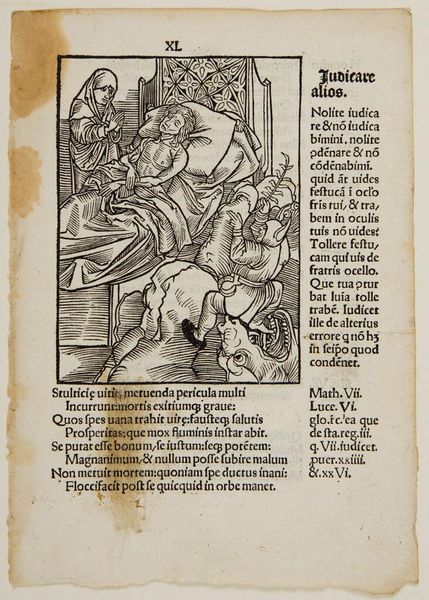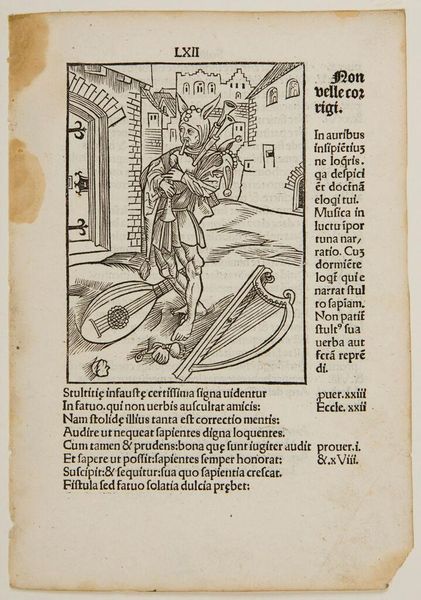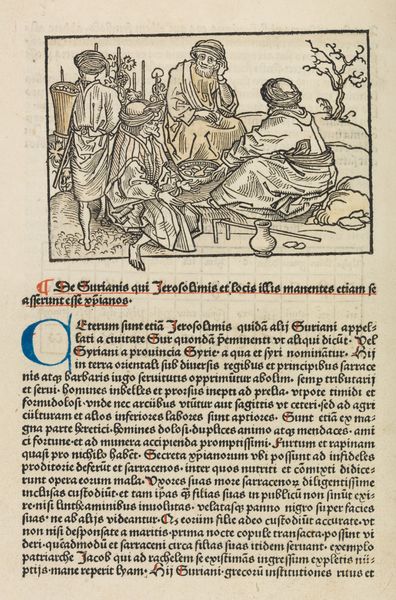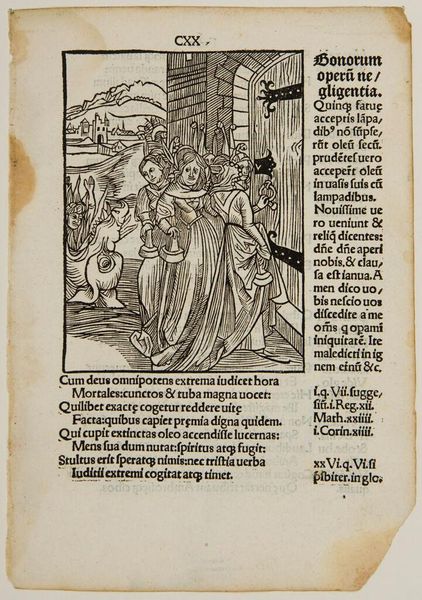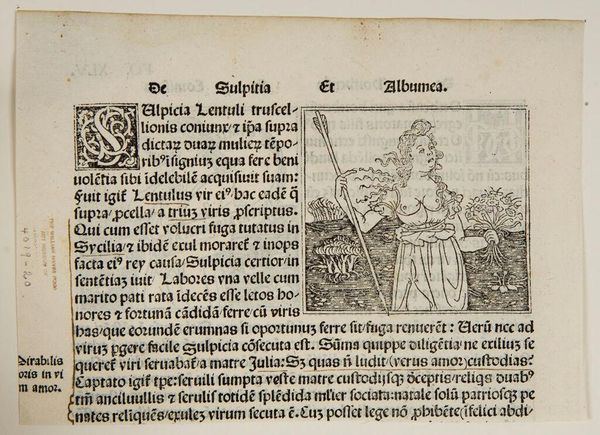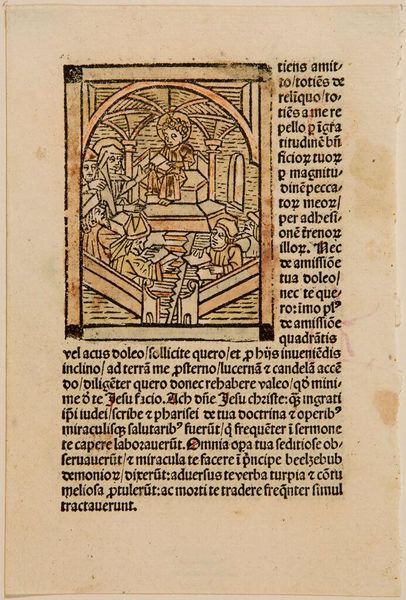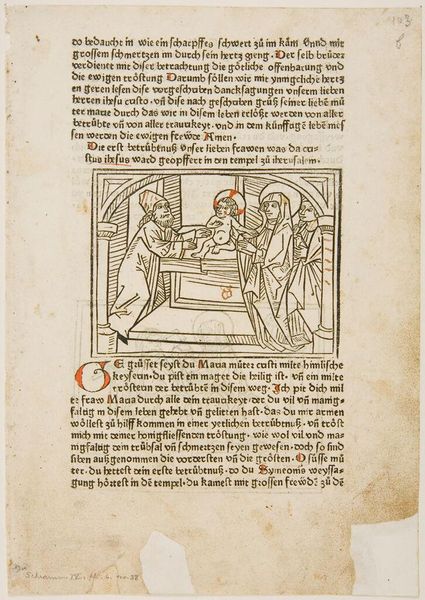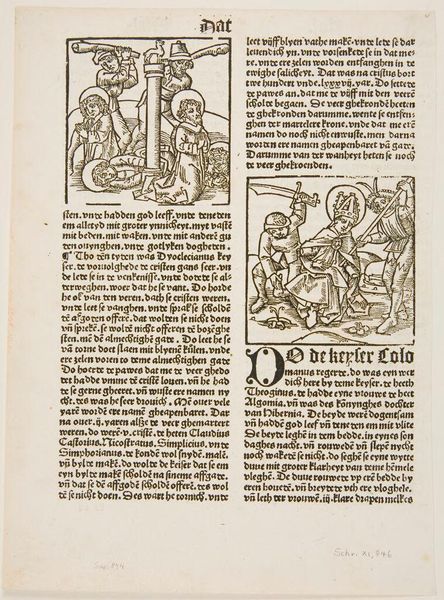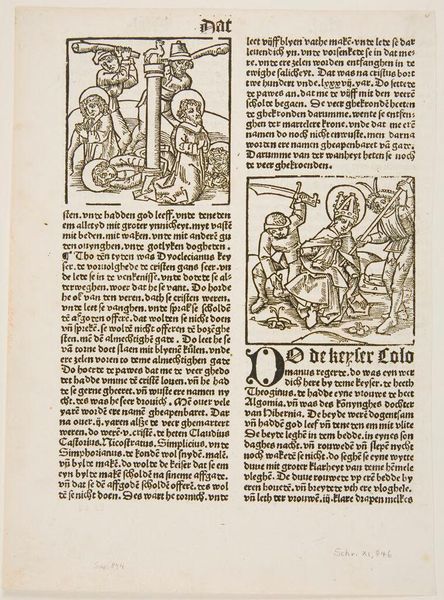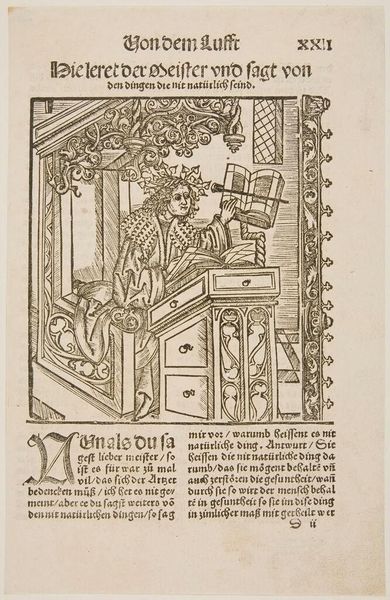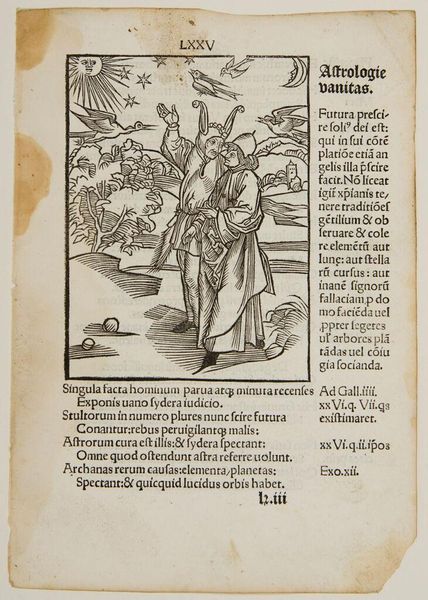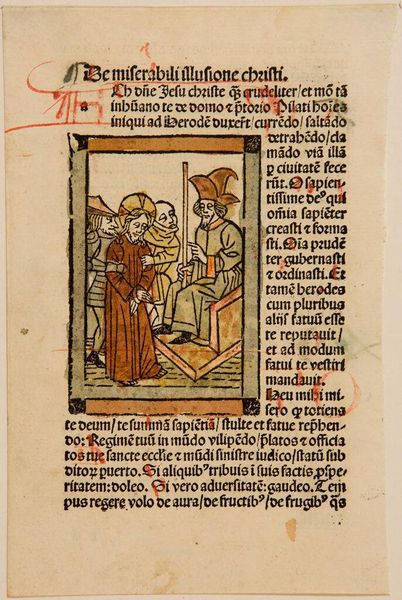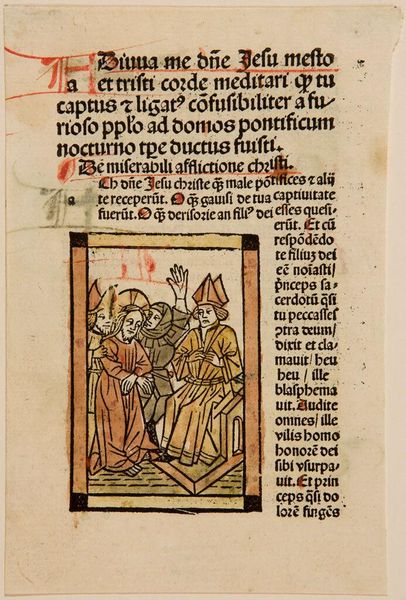
Copyright: CC0 1.0
Editor: This woodcut, "Ch. 33. Of Adultery," is by an anonymous artist. It's fascinating how it visualizes what seems to be a clandestine scene. What do you see in this piece, considering its age and subject matter? Curator: The symbolism here is potent. The woman with the covered head and the figure in the jester's hat seated at the table, laden with symbolic food, is striking. Consider the jester's hat, a signifier of folly or perhaps deceit. It speaks to the cultural memory of adultery as a transgression against social order. Editor: So the jester isn’t just a funny character, but a representation of the foolishness of adultery? Curator: Precisely. Note also the dog devouring bones beneath the table, a common symbol of fidelity, juxtaposed against the act of adultery. The artist seems to use familiar images to comment on the consequences and societal views of infidelity. What emotional impact does this interplay of symbols have on you? Editor: It definitely makes the image more complex, adding layers of meaning beyond just the surface depiction. Thanks, I've learned to read the image beyond its basic figures and delve into the symbolic language of its time.
Comments
No comments
Be the first to comment and join the conversation on the ultimate creative platform.
